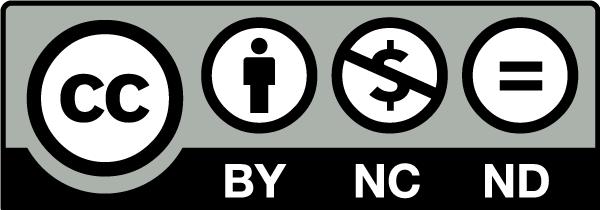Right-Wing Populism and the Representation of Immigrants on Social Media. A Critical Multimodal Analysis
DOI:
https://doi.org/10.13136/2281-4582/2020.i15.666Keywords:
racist discourse, immigration, right-wing populism, critical discourse studies, multimodal critical discourse analysis, social mediaAbstract
This paper presents a multimodal critical discourse analysis of a sample from a larger corpus of multimodal posts about immigration from the social media pages of right-wing populist leaders Donald Trump and Matteo Salvini. Drawing on Van Leeuwen’s framework for the representation of social actors, we investigate how multimodal resources contribute to shaping immigration discourse and to its bias, highlighting exclusionary ideologies through the recontextualisation of social practices. Our analysis reveals how the strategic synergy of images, videos, slogan-like language and the social affordances of Web 2.0 enables the two leaders to spread their nativist propaganda and emphasise the view of immigrants as a threat to security. The othering of immigrants as non-natives is enacted through biased representation based on covert racist stereotypes. At the same time, visual anti-immigration rhetoric allows the leaders to “build their people” and self-promote their role as gate-keepers of the nation-state.
References
Anderson, Benedict. Imagined Communities: Reflections on the Origin and Spread of Nationalism. London: Verso, 1983.
Austin, John. How to Do Things with Words. Cambridge: Harvard University Press, 1962.
Balibar Étienne. “Is There a ‘Neo-racism’?” Race, Nation, Class. Ambiguous Identities. Edited by Étienne Balibar and Immanuel Wellerstein. London: Verso, 1991. 17-28.
Bauman, Zygmunt. “Between Separation and Integration: Strategies of Cohabitation in the Era of Diasporization and Internet.” Popular Communication 16.1 (2018): 1-3.
---. Liquid Modernity. London: Polity, 2012.
---. Strangers at Our Door. London: Polity, 2016.
Bell, Alan. “Language Style as Audience Design.” Language in Society 13.2 (1984): 145-204.
Bleiker, Roland. “Mapping Visual Global Politics.” Visual Global Politics. London: Routledge, 2018.
Bonacina, Riccardo. “La strategia retorica di Salvini. Per una tassonomia del suo linguaggio social.” Vita Bookazine 23 August 2018. http://www.vita.it/it/article/2018/08/23/la-strategia-retorica-di-salvini-per-una-tassonomia-del-suo-linguaggio/148824/. All websites last visited 16/04/2020.
Bracciale, Roberta and Antonio Martella. “Define the Populist Political Communication Style: The Case of Italian Political Leaders on Twitter.” Information, Communication & Society 20.9 (2017): 1310-1329.
Canovan, Margaret. “People, Politicians and Populism.” Government and Opposition 19.3 (1984): 312-327.
---. Populism. New York: Harcourt Brace Jovanovich, 1981.
---. “Populism for Political Theorists?” Journal of Political Ideologies 9.3 (2004): 241-252.
---. “Trust the People! Populism and the Two Faces of Democracy.” Political Studies XLVII (1999): 2-16.
Chadwick, Andrew. The Hybrid Media System: Politics and Power. Oxford: Oxford University Press, 2013.
Charteris-Black, Jonathan. “Britain as a Container: Immigration Metaphors in the 2005 Election Campaign.” Discourse & Society 17.5 (2006): 563-581.
Chilton, Paul. Analysing Political Discourse: Theory and Practice. London: Routledge, 2004.
Colleoni Elanor, Alessandro Rozza and Adam Arvidsson. “Echo Chamber or Public Sphere? Predicting Political Orientation and Measuring Political Homophily in Twitter Using Big Data.” Journal of Communication 64.2 (2014): 317-332.
Cruse, Alan. Meaning in Language. An Introduction to Semantics and Pragmatics. Oxford: Oxford University Press, 2000.
Dawkins, Richard. The Selfish Gene. Oxford: Oxford University Press, 1976.
Dechaine, D. Robert. “Bordering the Civic Imaginary: Alienization, Fence Logic, and the Minuteman Civil Defense Corps.” Quarterly Journal of Speech. 95.1 (2009): 43-65.
Demata, Massimiliano. “‘I think that maybe I wouldn’t be here if it wasn’t for Twitter.’: Donald Trump’s Populist Style on Twitter.” Textus XXXI.1 (2018): 67-90.
Eco, Umberto. Cinque scritti morali. Milano: Bompiani, 1997.
Ekman, Paul and Wallace Friesen. “The Repertoire of Nonverbal Behavior: Categories, Origins, Usage, and Coding.” Semiotica 1.1 (1969): 49-98.
Engesser, Sven, et al. “Populism and Social Media: How Politicians Spread a Fragmented Ideology.” Information, Communication & Society 20.8 (2017): 1109-1226.
Freeden, Michael. “After the Brexit Referendum: Revising Populism as an Ideology.” Political Ideologies 22.1 (2017): 1-11.
---. Ideologies and Political Theory: A Conceptual Approach. Oxford: Clarendon Press, 1996.
Gantt Shafer, Jessica. “Donald Trump’s ‘Political Incorrectness’: Neoliberalism as Frontstage Racism on Social Media.” Social Media + Society (2017): 1-10.
Gerbaudo Paolo. “Populism 2.0: Social Media Activism, the Generic Internet User and Interactive Direct Democracy.” Social Media, Politics and the State Protests, Revolutions, Riots, Crime and Policing in the Age of Facebook, Twitter and YouTube. Edited by Daniel Trottier and Christian Fuchs. New York: Routledge, 2014. 67-87.
---. “Social Media and Populism: An Elective Affinity?” Media, Culture & Society 40.5 (2018): 745-753.
Grossman, Emiliano. “France’s Yellow Vests—Symptom of a Chronic Disease.” Political Insight 10.1 (2019): 30-34.
Guerra, Sara. “The Algorithmic Populism of Matteo Salvini.” Diggit Magazine 2019. https://www.diggitmagazine.com/papers/algorithmic-populism-salvini.
Halupka, Max. “Clicktivism: A Systematic Heuristic.” Policy & Internet 6.2 (2014): 115-132.
Han, Byung-Chul. In the Swarm. Digital Prospects. Translated by Erik Butler. Cambridge: The MIT Press, 2017.
Hänska-Ahy, Max and Stefan Bauchowitz. “Tweeting for Brexit: How Social Media Influenced the Referendum.” Brexit, Trump and the Media. Edited by John Mair, et al. Bury St. Edmunds: Abramis Academic Publishing, 2017. 31-35.
Heuman, Amy N., and Alberto González. “Trump’s Essentialist Rhetoric: Racial Identities and Dangerous Liminalities.” Journal of Intercultural Communication Research 47.4 (2018): 326-342.
Hogan, Jackie, and Kristin Haltinner. “Floods, Invaders and Parasites: Immigration Threat Narratives and Right-Wing Populism in the USA, UK and Australia.” Journal of Intercultural Studies 36.5 (2015): 520-543.
“How to Increase Facebook Engagement the Right Way.” Lyfe Marketing 23 September 2019. https://www.lyfemarketing.com/blog/facebook-engagement/.
IOM-International Organization for Migration. Glossary on Migration, IML Series 34, 2019. https://publications.iom.int/system/files/pdf/iml_34_glossary.pdf.
Ivaldi, Gilles, Maria Elisabetta Lanzone and Dwayne Woods. “Varieties of Populism across a Left-Right Spectrum: The Case of the Front National, the Northern League, Podemos and Five Star Movement.” Swiss Political Science Review 23.4 (2017): 354-376.
Jones, Matt. “What Donald Trump’s Hand Gestures Really Mean.” GQ 17 July 2017.
https://www.gq-magazine.co.uk/article/donald-trump-hand-gestures-politics.
Kazin, Michael. The Populist Persuasion. An American History. New York: Basic Books, 1995.
Kendi, Ibram X. “The Day Shithole Entered the Presidential Lexicon.” The Atlantic 13 January 2019. https://www.theatlantic.com/politics/archive/2019/01/shithole-countries/580054/
KhosraviNik, Majid. “Social Media Critical Discourse Studies (SM-CDS).” Handbook of Critical Discourse Analysis. Edited by John Flowerdew and John Richardson. London: Routledge, 2017. 582-596.
KhosraviNik, Majid and Johann W. Unger. “Critical Discourse Studies and Social Media: Power, Resistance and Critique in Changing Media Ecologies.” Methods for Critical Discourse Analysis. Edited by Ruth Wodak and Michael Meyer. London: SAGE, 2016. 205-233.
Klinger, Ulrike and Jakob Svensson. “The Emergence of Network Media Logic in Political Communication: A Theoretical Approach.” New Media & Society 17.8 (2015): 1241-1257.
Kress, Gunther. “Multimodal Discourse Analysis.” The Routledge Handbook of Discourse Analysis. Edited by James Paul Gee and Michael Handford. London: Routledge, 2011. 35-50.
Kress, Gunther and Theo Van Leeuwen. “Colour as a Semiotic Mode: Notes for a Grammar of Colour.” Visual Communication 1.3 (2002): 343-368.
---. Reading Images: The Grammar of Visual Design. London: Routledge, 2006.
Kruikemeier Sanne, et al. “Getting Closer: The Effects of Personalised and Interactive Online Political Communication.” European Journal of Communication 28.1 (2013): 53-66.
Laclau, Ernesto. On Populist Reason. London: Verso, 2005a.
---. “Populism: What’s in a Name?” Populism and the Mirror of Democracy. Edited by Francisco Panizza. London: Verso, 2005b. 32-49.
Lakoff, George. The All New Don’t Think of an Elephant. Know Your Values and Frame the Debate. White River Junction: Chelsea Green Publishing, 2014.
Ledin, Per and David Machin. Introduction to Multimodal Discourse Analysis. London: Bloomsbury, 2020.
Lee, Michael J. “The Populist Chameleon: The People’s Party, Huey Long, George Wallace, and the Populist Argumentative Frame.” Quarterly Journal of Speech 92.4 (2006): 355-378.
Levin, Beth. English Verb Classes and Alternation: A Preliminary Investigation. Chicago: The University of Chicago Press, 1993.
Levin, Beth and Malka Rappaport Hovav. Argument Realization. Cambridge: Cambridge University Press, 2005.
Lévi-Strauss, Claude. Tristes Tropiques. Paris: Librairie Plon, 1955.
Lilleker, Darren G., Anastasia Veneti and Daniel Jackson. “Introduction: Visual Political Communication.” Visual Political Communication. Edited by Anastasia Veneti, Daniel Jackson, and Darren G. Lilleker. London: Palgrave, 2020. 1-11.
Lorenzetti, Maria Ivana. “A Cross-Linguistic Study of New Populist Language.” Doing Politics. Discursivity, Performativity and Mediation in Political Discourse. Edited by Michael Kranert and Geraldine Horan. Amsterdam: John Benjamins, 2018. 153-177.
---. “Anti-Immigration Rhetoric in Italy and in the USA: A Comparative Perspective.” De Europa 3.1 (forthcoming).
---. “Crafting an Effective Message for the Masses, or the Art of Populism: An Analysis of New Populist Rhetoric from a Textual Perspective.” The Languages of Politics/La politique et ses langages vol.1. Edited by Marta Degani, Paolo Frassi and Maria Ivana Lorenzetti.
Newcastle upon Tyne: Cambridge Scholars Publishing, 2016. 125-157.
Machin, David. “What Is Multimodal Critical Discourse Studies?” Critical Discourse Studies 10.4 (2013): 347-355.
Machin, David and Andrea Mayr. How to Do Critical Discourse Analysis: A Multimodal Introduction. London: SAGE, 2012.
Mair, Peter. Ruling the Void. The Hollowing of Western Democracy. London: Verso, 2013.
Mazzoleni, Giampietro and Roberta Bracciale. La politica pop online. Il meme e le nuove sfide della comunicazione politica. Bologna: Il Mulino, 2019.
---. “Socially Mediated Populism: The Communicative Strategies of Political Leaders on Facebook.” Palgrave Communications 4.50 (2018): 1-10.
Moffitt, Benjamin. The Global Rise of Populism: Performance, Political Style, and Representation. Stanford: Stanford University Press, 2016.
Mudde, Cas. “Populism: An Ideational Approach.” The Oxford Handbook of Populism. Edited by Cristóbal Rovira Kaltwasser, et al. Oxford: Oxford University Press, 2017. 27-47.
---. “The Populist Zeitgeist.” Government and Opposition 39.3 (2004): 541-563.
Mudde, Cas and Cristóbal Rovira Kaltwasser. Populism. A Very Short Introduction. Oxford: Oxford University Press, 2017.
Musolff, Andreas. “Dehumanizing Metaphors in UK Immigrant Debates in Press and Online Media.” Journal of Aggression and Conflict 3.1 (2015): 41-56.
Ostiguy, Pierre and Kenneth M. Roberts. “Putting Trump in Comparative Perspective: Populism and the Politicization of the Sociocultural Low.” The Brown Journal of World Affairs XXIII.1 (2016): 25-50.
Owen, Diana. “New Media and Political Campaigns.” The Handbook of Political Communication. Edited by Kate Kenski and Kathleen Hall Jamieson. Oxford: Oxford University Press, 2017. 823-836.
Panizza, Francisco. “Introduction: Populism and the Mirror of Democracy.” Populism and The Mirror of Democracy. London, Verso: 2005. 1-31.
Pelinka, Anton. “Right-Wing Populism: Concept and Typology.” Right-Wing Populism in Europe. Politics and Discourse. Edited by Ruth Wodak, Majid KhosraviNik and Brigitte Mral. London: Bloomsbury, 2013. 3-21.
Perlmutter, David M. “Impersonal Passives and the Unaccusative Hypothesis.” Proceedings of the Annual Meeting of the Berkeley Linguistics Society 38. Berkeley: Berkeley Linguistic Society, 1968. 157-189.
Pinero-Pinero, Gracia and John Moore. “Metaphorical Conceptualisation of Migration Control Laws: Narratives of Oppression.” Journal of Language and Politics 14.4 (2015): 577-598.
Ritzer, George and Paul Dean. Globalization. A Basic Text. Chichester: Blackwell, 2010.
Shifman, Limor. “Memes in a Digital World: Reconciling with a Conceptual Troublemaker.” Journal of Computer-Mediated Communication 18 (2013): 362-377.
Smith, Roger M. “Citizenship and the Politics of People-Building.” Citizenship Studies 5.1 (2001): 73-96.
Stavrakakis, Yannis. “The Return of ‘the People’: Populism and Anti‐Populism in the Shadow of the European Crisis.” Constellations 21 (2014): 505-517.
Taggart, Paul. Populism. Buckingham: Open University Press, 2000.
Taguieff, Pierre-André. The Force of Prejudice: On Racism and Its Doubles. Minneapolis: University of Minnesota Press, 2001.
UN DESA-United Nations, Department of Economic and Social Affairs. Population Division (2019). International Migrant Stock 2019. United National Database, POP/DB/MIG/Stock/Rev. 2019.
UNHCR-United Nations, High Commissioner for Refugees. UNHCR Master Glossary of Terms, Rev.1, June 2006. https://www.refworld.org/docid/42ce7d444.html.
Valenzuela, Sebastián et al. “The Paradox of Participation versus Misinformation: Social Media, Political Engagement, and the Spread of Misinformation.” Digital Journalism 7.6 (2019): 802-823.
Van Aelst, Peter, Tamir Sheafer and James Stanyer. “The Personalization of Mediated Political Communication: A Review of Concepts, Operationalizations and Key Findings.” Journalism 13.2 (2012): 203-220.
Van Dijk, Teun. “Critical Discourse Analysis.” The Handbook of Discourse Analysis. Edited by Deborah Tannen, Heidi E. Hamilton and Deborah Schiffrin. Chichester: Wiley Blackwell, 2015. 349-371.
---. “Discourse and Racism.” A Companion to Racial and Ethnic Studies. Edited by David Theo Goldberg and John Solomos. London: Blackwell, 2002. 145-159.
---. “Discourse and the Denial of Racism.” Discourse & Society 3.1 (1992): 87-118.
---. “Ideology and Discourse.” The Oxford Handbook of Political Ideologies. Edited by Michael Freeden, Lyman Tower Sargent and Marc Stears. Oxford: Oxford University Press, 2013. 175-196.
Van Leeuwen, Theo. Discourse and Practice. New Tools for Critical Discourse Analysis. Oxford: Oxford University Press, 2008.
---. “Visual Racism.” The Semiotics of Racism: Approaches in Critical Discourse Analysis. Edited by Martin Reisigl and Ruth Wodak. Vienna: Passagen Verlag, 2000. 35-56.
Van Leeuwen, Theo and Ruth Wodak. “Legitimizing Immigration Control. A Discourse-Historical Approach.” Discourse Studies 1.1 (1999): 83-118.
Wodak, Ruth. The Politics of Fear. What Right-Wing Populist Discourses Mean. London: SAGE, 2015.
Wodak, Ruth, Majid KhosraviNik and Brigitte Mral, edited by. Right-Wing Populism in Europe. Politics and Discourse. London: Bloomsbury, 2013.
Wodak, Ruth and Martin Reisigl. “Discourse and Racism: European Perspectives.” Annual Review of Anthropology 28.1 (1999): 175-199.
---. “Discourse and Racism.” The Handbook of Discourse Analysis. Edited by Deborah Tannen, Heidi E. Hamilton and Deborah Schiffrin. Chichester: Wiley Blackwell, 2015. 576-596.
Wutz, Isabell and Lisanne Nugteren. “Brexit and Online Political Activism. On Vox Populism, Slacktivism and Online Intertextuality.” Diggit Magazine 2018. https://www.diggitmagazine.com/papers/brexit-and-online-political-activism.
Young, Jock. “Cannibalism and Bulimia: Patterns of Social Control in Late Modernity.” Theoretical Criminology 3.4 (1999): 387-407.
Downloads
Published
Issue
Section
License
Copyright (c) 2020 Maria Ivana Lorenzetti

This work is licensed under a Creative Commons Attribution-NonCommercial 4.0 International License.
Iperstoria is an Open Access journal.- Authors retain copyright and grant the journal right of first publication with the work simultaneously licensed under a Creative Commons Attribution 4.0 BY-NC License that allows others to share the work with an acknowledgement of the work's authorship and initial publication in this journal.
- Authors are able to enter into separate, additional contractual arrangements for the non-exclusive distribution of the journal's published version of their work (e.g., post it to an institutional repository or publish it in a book), with an acknowledgement of its initial publication in this journal. We require authors to inform us of any instances of re-publication.







